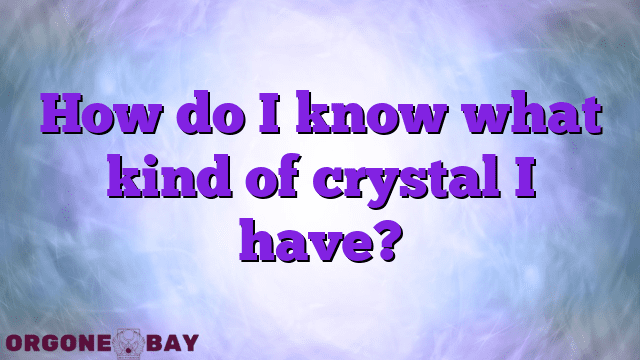Crystal Basics & Properties
How do I know what kind of crystal I have?
If you’re new to the world of crystals, identifying the type of crystal you own might seem daunting. However, there are a few simple ways to determine what kind of crystal you have. Analyzing the form of the crystal is an effective way of narrowing down its type. Here are some steps you can follow to identify the kind of crystal you have:
- Examine the shape of the crystal: If your crystal has a hexagonal shape, it might be an emerald or an aquamarine. These crystals are typically green or blue. However, if the crystal you have isn’t green or blue, you can compare its hexagonal form with other similar hexagonal crystals.
- Check the color of the crystal: The color of a crystal can also be an indicator of its type. For instance, rose quartz is pink in color, while amethyst is purple. If you’re unsure of the color, you can take the crystal outside and observe it in natural light to get a better idea of its color.
- Examine the crystal from various angles: Look at the crystal from different angles to determine its shape. Is it elongated, cubic, pointed or flat? This information would go a long way in determining the kind of crystal it is.
- Do some research: If you’re still having trouble determining the type of crystal you own, try doing some research online. There are many resources available on the internet that can help you identify crystals by their properties, shapes, and colors.
These are just a few ways to determine the type of crystal you own. Remember that identifying crystals takes practice and experience, so don’t worry if you don’t get it right the first time. With patience, observation, and research, you’ll be able to identify crystals like a pro in no time!
Table Of Contents
Analyzing the Form of a Crystal
Crystals can appear in various shapes and sizes, but the form of a crystal can provide valuable clues as to what type of crystal it is. Analyzing the form of a crystal involves observing its shape and structure. Take a closer look at your crystal and note any distinguishing features. Does your crystal have sharp edges and points or is it more rounded? Is it elongated or compact? Answering these questions can help you identify the crystal’s form.
Identifying a Hexagonal Shape
One characteristic shape to look out for when identifying a crystal is the hexagonal shape. Hexagonal crystals have six sides, six edges, and six angles. This shape is quite common among many crystals, making it a helpful identifier. If your crystal has a hexagonal shape, you can narrow down your search to crystals that typically have this structure.
Potential Crystals with Hexagonal Shapes
If your crystal has a hexagonal shape, it could be one of several types of crystals. Some common crystals with this shape include emerald, aquamarine, quartz, and beryl. Keep in mind that the color of the crystal can also provide further clues as to its identity. For example, an emerald is typically green while an aquamarine is typically blue or light blue.
Observing Crystal Color
Another important factor to consider when identifying a crystal is its color. Many types of crystals are known for their unique coloring, which can range from clear or white to a variety of hues. Take note of your crystal’s color and compare it to known crystal colors to help narrow down your search.
Comparing with Similar Crystals
If you’re uncertain about the exact type of crystal you have, comparing it with similar crystals can be helpful. Look for crystals that have similar shapes, colors, or markings. Examine the texture of your crystal and compare it with other crystals to find a match. By comparing your crystal with others, you can gain valuable insights into its identity.
Examining the Crystal from Various Angles
To get a complete picture of your crystal, it’s important to examine it from various angles. This can reveal different aspects of the crystal’s structure and form. Look at your crystal’s sides, edges, and angles to get a better idea of its overall shape. By examining your crystal from all angles, you can gather important information that can aid in your identification efforts.
Narrowing Down the Type of Crystal
By analyzing the form, color, and texture of your crystal and comparing it with others, you can begin to narrow down the type of crystal you have. Eliminating crystals that don’t match your crystal’s features can help you focus your search. Take note of the shape, color, texture, and any other distinguishing features so that you can identify the crystal with greater accuracy.
Final Determination of Crystal Type
Once you’ve gathered all the necessary information, it’s time to make a final determination of the type of crystal you have. Consult crystal identification resources, such as books or websites, to help you identify your crystal. If you’re still unsure, consider seeking help from a crystal expert or a knowledgeable crystal retailer. With careful observation and attention to detail, you can determine the type of crystal you own and unlock its potential benefits.

